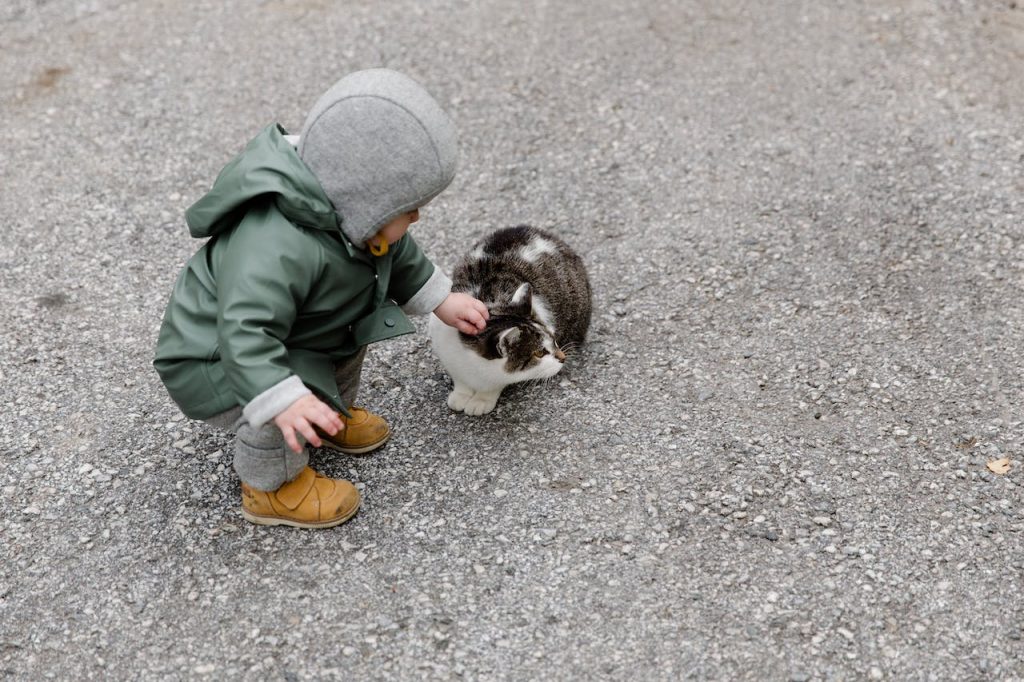A Guide to Safely Trim Baby’s Nails
Taking care of a baby involves numerous tasks, and one that often causes anxiety for new parents is cutting their tiny, delicate nails. Babies’ nails can be surprisingly sharp and can lead to unintentional scratches, making the process of nail trimming an essential part of infant care. In this comprehensive guide, we’ll delve into the various aspects of cutting a baby’s nails, covering tools, techniques, safety measures, and more.
The Importance of Nail Care for Babies
Understanding why it’s crucial to trim a baby’s nails can ease some of the apprehension associated with the task. Babies have a natural instinct to explore their surroundings, and their tiny, fast-growing nails can inadvertently cause scratches, particularly to their own faces. By keeping their nails short, you not only protect your baby from scratches but also ensure their comfort and well-being.

Essential Tools for Baby Nail Care
Selecting the right tools is the first step towards a successful nail-trimming session. Baby nail clippers with rounded edges are widely recommended for their precision and safety. Alternatively, baby nail scissors with blunt tips can also be a good choice. Some parents find it beneficial to have both options on hand, using clippers for a quick trim and scissors for more detailed work.
Additionally, consider investing in a baby nail file or emery board. These tools can be invaluable for smoothing any rough edges after trimming, reducing the risk of scratches. Choosing tools specifically designed for babies ensures that they are appropriately sized and have features to prevent accidental nicks and cuts.
Creating the Right Environment
The environment in which you trim your baby’s nails can significantly impact the process. Choose a well-lit area with sufficient natural light if possible. Proper lighting ensures that you can see the translucent part of the nail clearly, reducing the risk of cutting into the sensitive skin around it.
It’s also essential to create a calm and comfortable setting. Babies are more likely to cooperate if they feel secure. Consider trimming their nails after a warm bath or during a nap when they are more relaxed. If your baby tends to be more cooperative when held, enlist the help of a partner or family member to hold the baby securely while you focus on the task.
Timing Matters
Timing is crucial when it comes to cutting a baby’s nails. Choosing the right moment can make the process much smoother. Many parents find that their baby is more cooperative after a bath when the nails are softer. Alternatively, during a nap can be an opportune time as the baby is likely to be more relaxed.
Avoid trimming your baby’s nails when they are agitated or hungry, as this can increase the chances of resistance and make the process more challenging. By selecting the right time, you set the stage for a successful and stress-free nail-trimming experience.

Step-by-Step Guide for Trimming Baby Nails
Step 1: Wash Your Hands
Begin by washing your hands thoroughly. Clean hands reduce the risk of transferring dirt or germs to your baby’s nails, minimizing the possibility of infection.
Step 2: Gather Supplies
Before you start, gather all the necessary supplies. This includes baby nail clippers or scissors, a baby nail file or emery board, and a soft, clean towel. Having everything within reach ensures a smooth and efficient process.
Step 3: Get Assistance
If possible, recruit a helper. Having someone else hold the baby’s hand gently but securely can make the task more manageable. This ensures that the baby’s hand remains steady, reducing the risk of accidental cuts.
Step 4: Inspect the Nails
Carefully examine your baby’s nails, identifying the translucent part near the fingertip. This is the safe area to trim. Avoid the whiter, harder part at the tip, as cutting into this can lead to bleeding and discomfort for the baby.

Step 5: Choose the Right Angle
Hold the baby’s hand, and choose an angle that allows you to trim the nails straight across or follow the natural curve of the fingertip. Be cautious not to cut into the surrounding skin, as the skin around a baby’s nails is exceptionally soft and sensitive.
Step 6: Trim Carefully
Begin trimming the nails, starting with small, careful cuts. It’s better to make multiple small cuts than to risk cutting too much at once. Pay close attention to the baby’s reaction, and if they become upset or fidgety, take a break and try again later.
Step 7: Smooth Edges
After trimming, use the baby nail file or emery board to smooth any rough edges. This step is essential for minimizing the risk of scratches and ensuring the baby’s nails are comfortable.
Step 8: Be Calm and Reassuring
Throughout the process, maintain a calm and reassuring demeanor. Speak softly to your baby and provide gentle reassurance. If the baby becomes upset, take breaks as needed, allowing them to calm down before continuing.
Step 9: Check for Sharp Edges
After trimming and filing, carefully check for any remaining sharp edges. Use the nail file to smooth out any rough spots, ensuring the nails are as smooth as possible.
Step 10: Reward and Positive Reinforcement
Consider offering a small reward or positive reinforcement after the nail-trimming session. This can be a gentle cuddle, a favorite toy, or a soothing lullaby. Associating the experience with positive outcomes can make future nail trimming sessions more manageable.

Additional Tips for Successful Baby Nail Care
Don’t Use Adult-Sized Clippers
Using adult-sized clippers can be unwieldy and increases the risk of accidental cuts. Opt for baby-sized clippers or scissors designed specifically for infants.
If You’re Unsure, Ask for Help
If you’re a new parent or feel uncertain about the process, don’t hesitate to ask for help. Consult with your pediatrician, a nurse, or an experienced family member who can provide guidance and even demonstrate the process.
Consider Doing it When Your Baby is Asleep
If your baby tends to be more cooperative during sleep, consider trimming their nails while they are napping. This minimizes movement and can make the process more straightforward.
Use Distraction Techniques
Engage your baby’s attention with a favorite toy, a gentle song, or a captivating mobile. Distraction techniques can help keep them calm and focused on something other than the nail-trimming process.
Regular Maintenance
Make nail care a regular part of your baby’s hygiene routine. By consistently trimming their nails, you reduce the likelihood of scratches and ensure their comfort.

Conclusion
Trimming a baby’s nails may seem daunting at first, but with the right tools, techniques, and a calm approach, it can become a routine and stress-free part of caring for your little one. Remember, each baby is unique, and finding the approach that works best for you and your baby may take some trial and error. Be patient, stay attentive to your baby’s cues, and celebrate each successful nail-trimming session as a small victory in your parenting journey.

